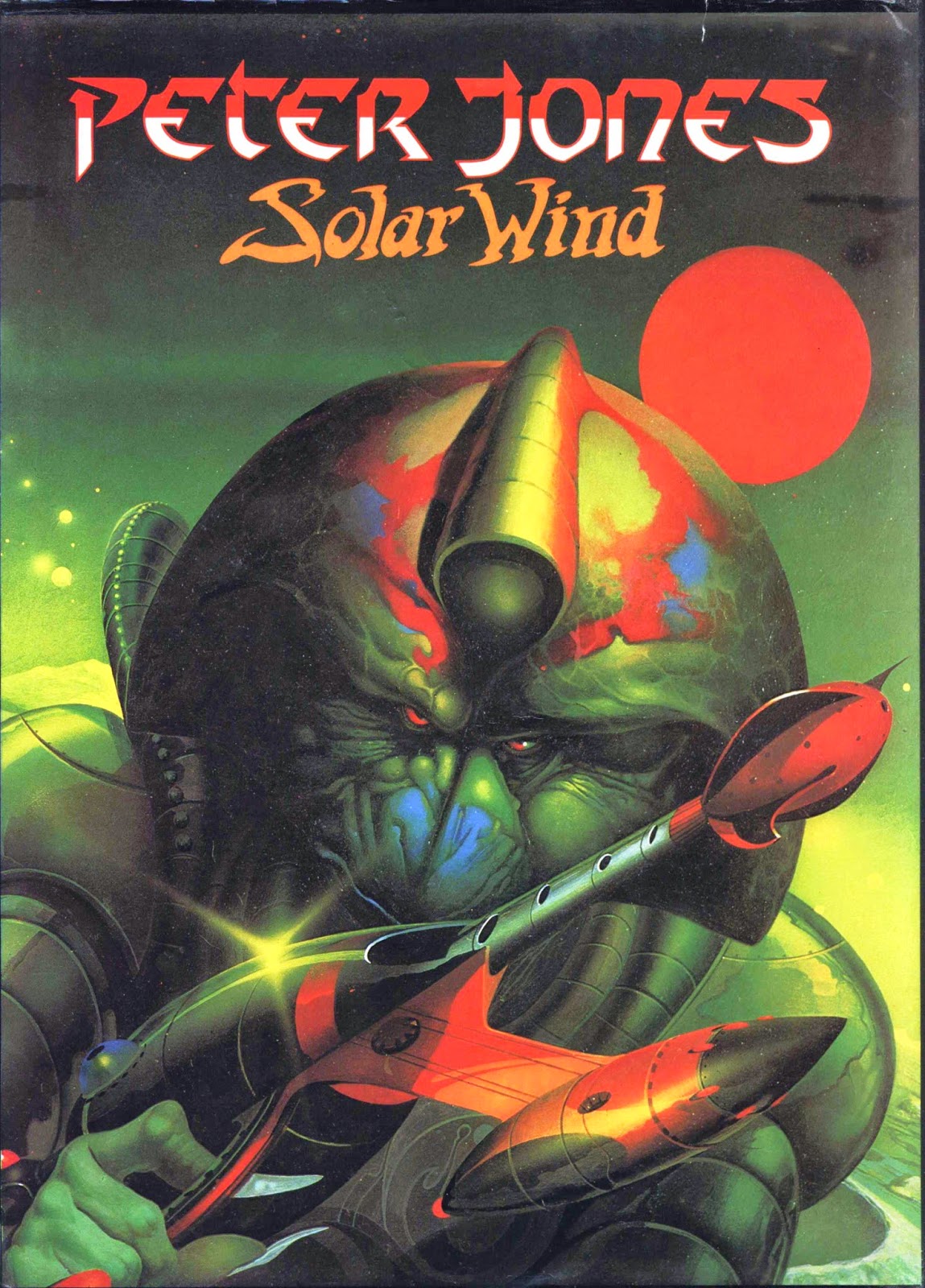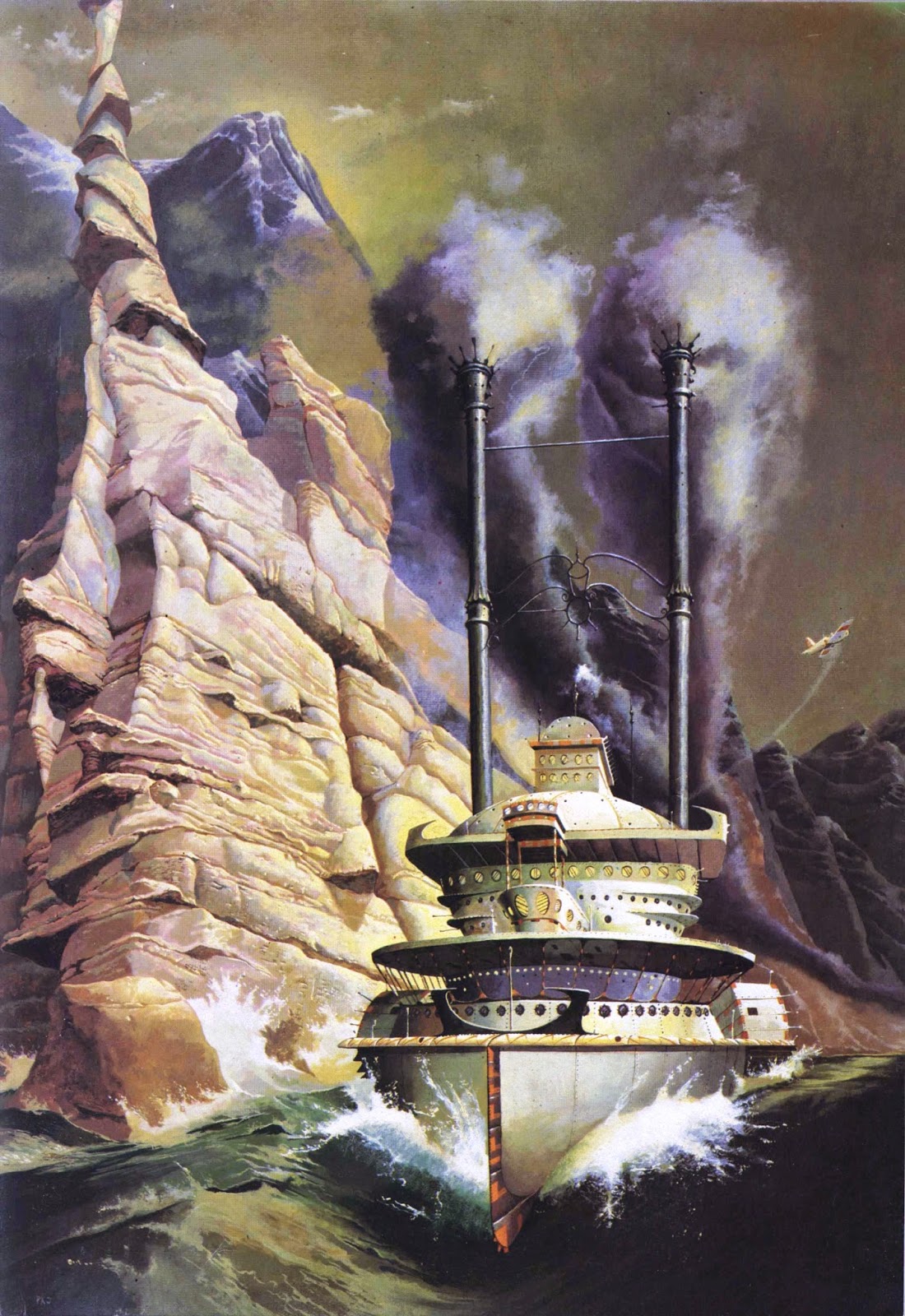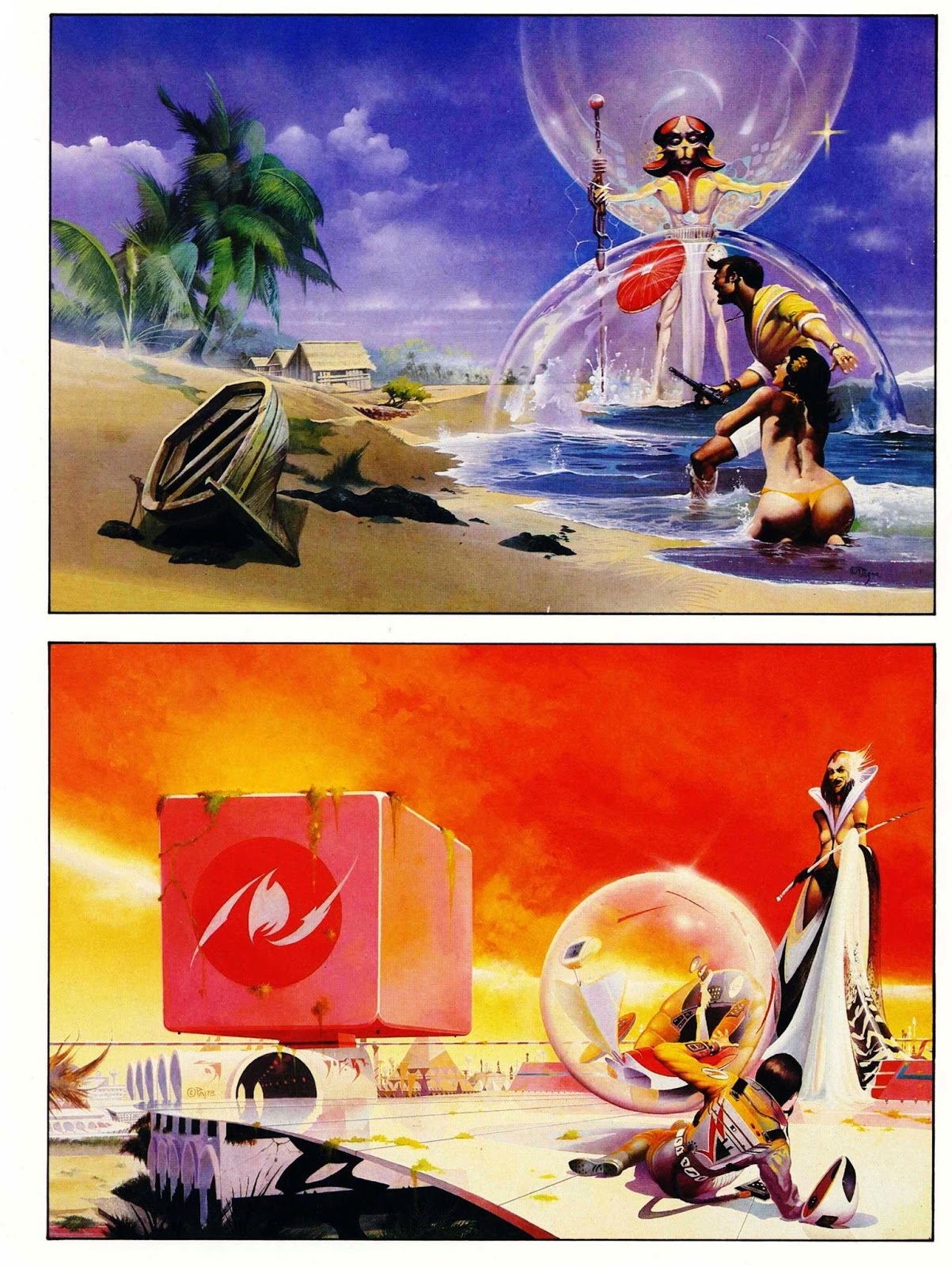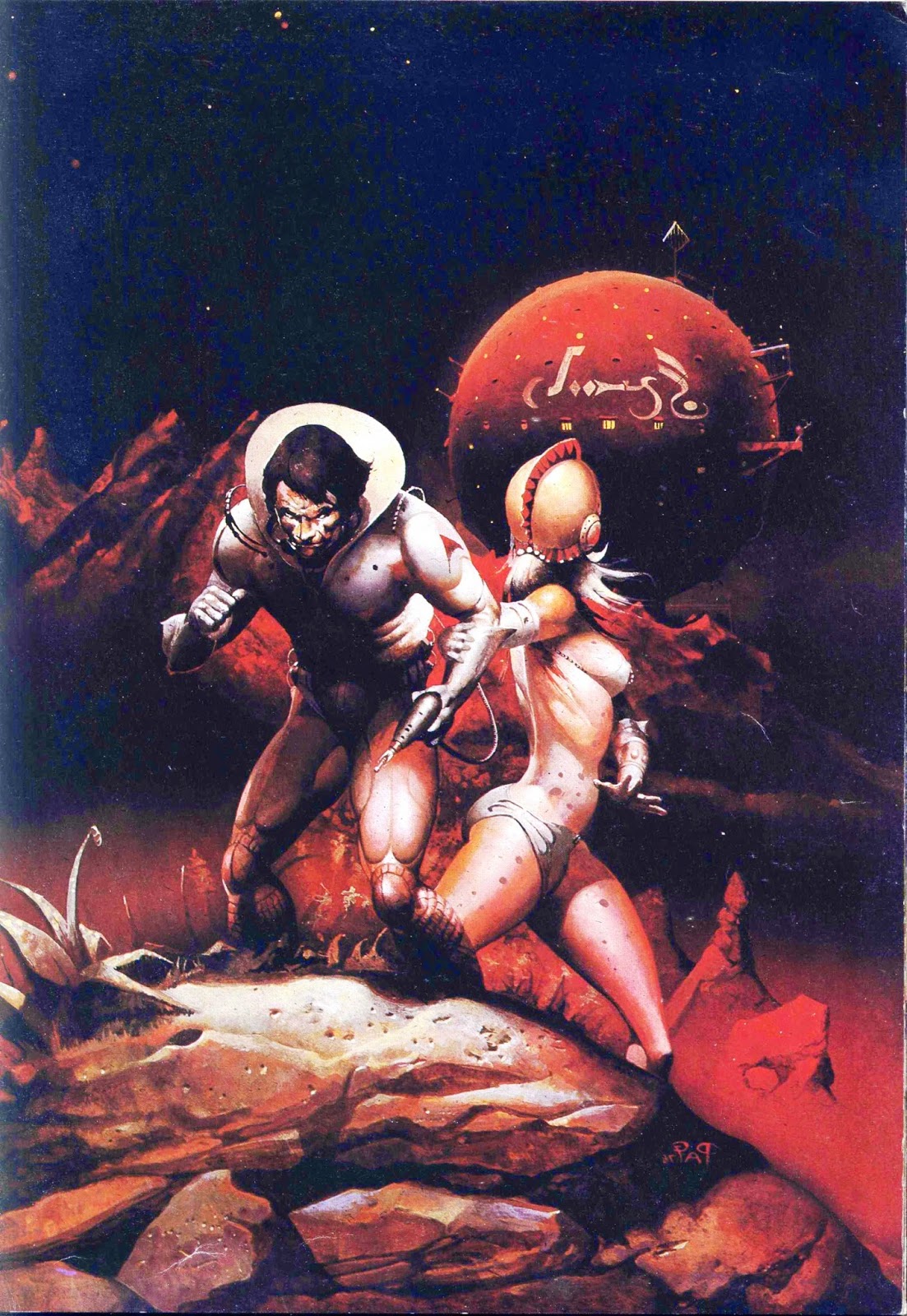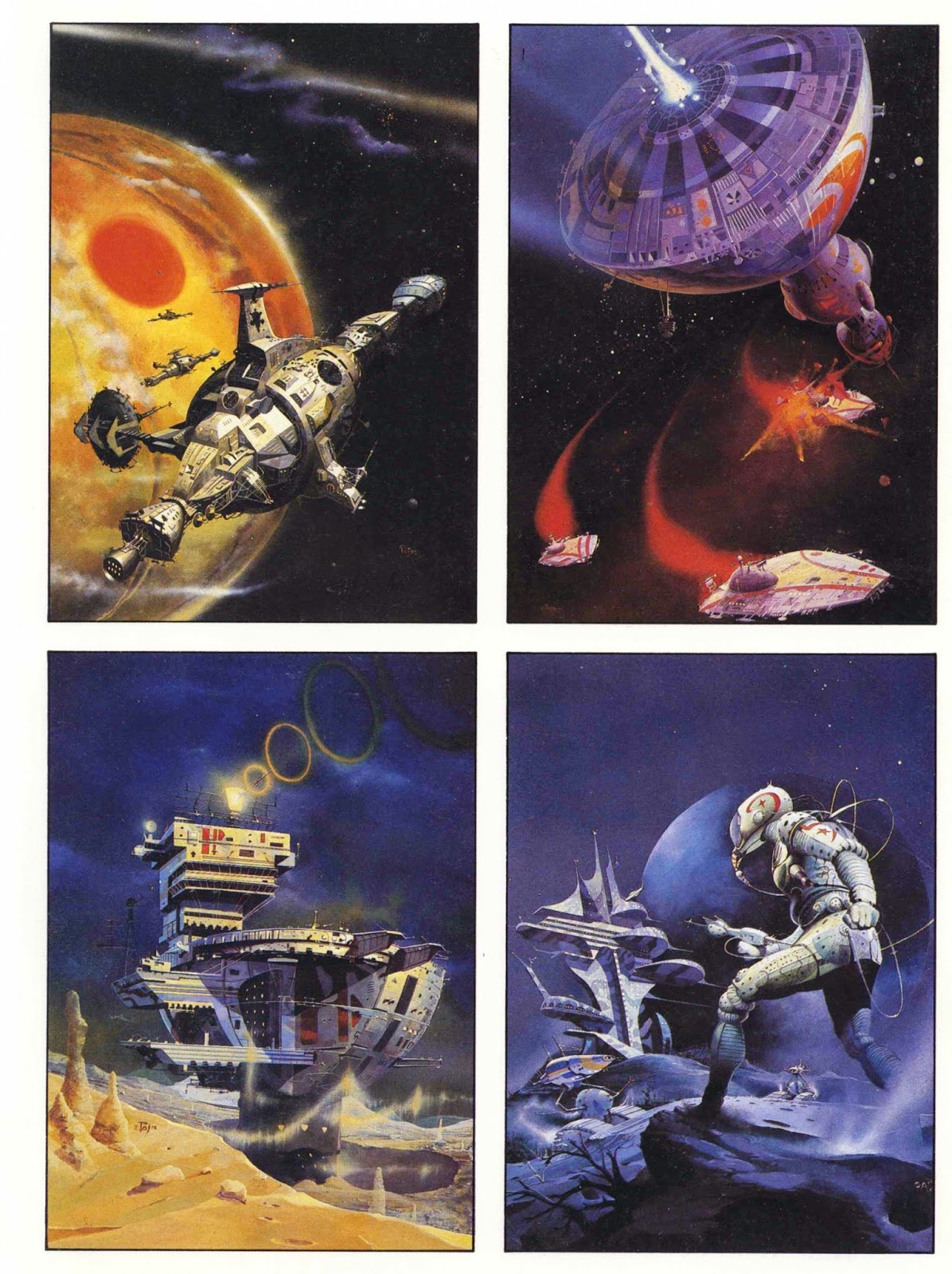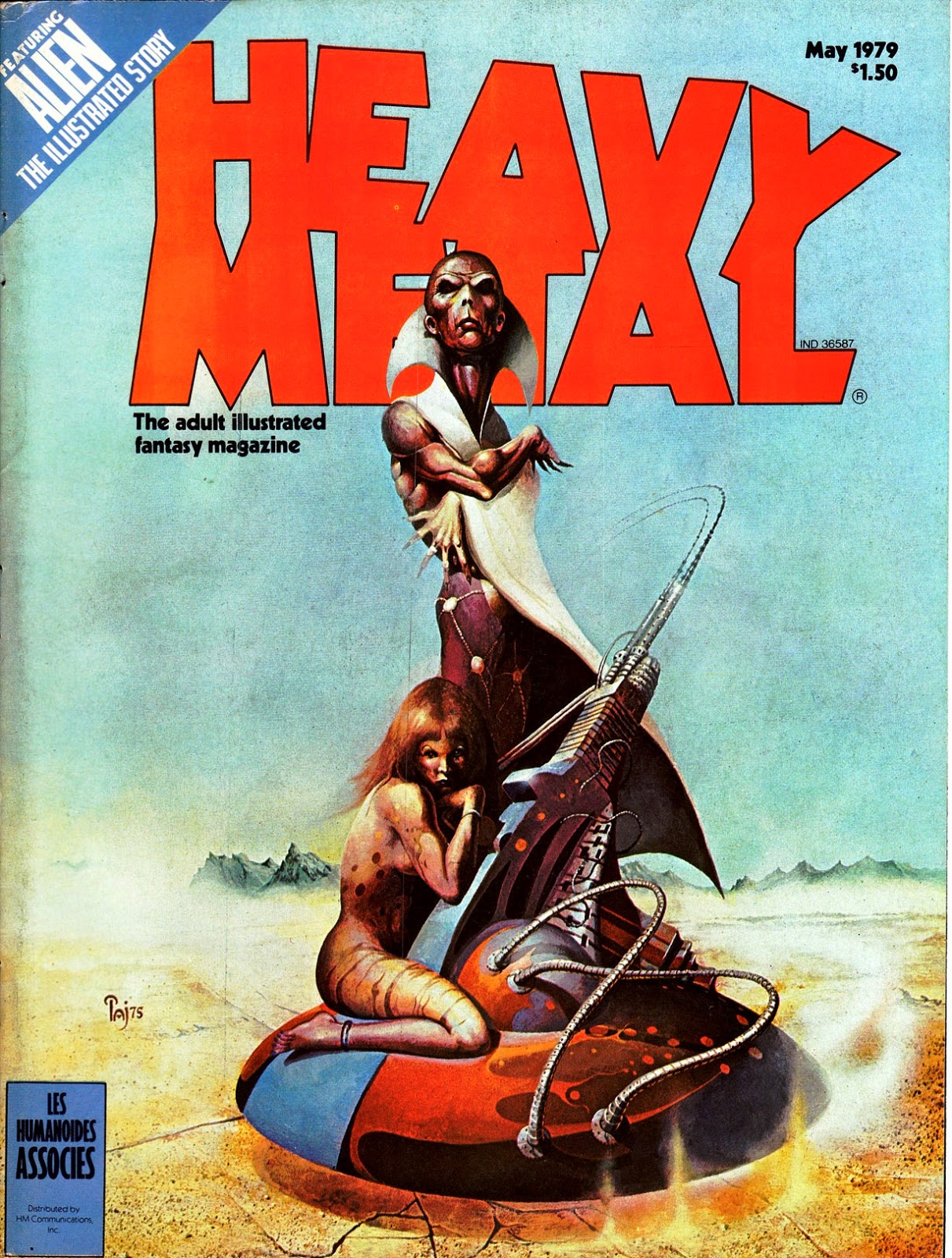by Peter Jones
Paper Tiger (UK) 1980
Peter Jones was born in London in 1951 and began illustrating sf paperbacks in 1974, while he was a student at St Martin's School of Art in that city. He quickly became one of the most successful illustrators of UK sf and fantasy books during the 70s and 80s; today he does a variety of commercial and studio art works under the rubric of his company 'Solar Wind'.
clockwise from the upper left: Scenaptic
Manhunt, Dark Twin,The Warlock
in Spite of Himself, The Chalk Giants
Solar Wind, the book, is a collection of Jones's sf and fantasy artwork published during the interval 1974 - 1980. While the majority of Jones's commissions were for UK-based publishers like Granda, Futura, and Sphere, some of his works are going to be recognized by US readers, particularly those repurposed as cover illustrations for classic early issues of Heavy Metal magazine.
The Second Experiment
Jones's artwork during the 70s had a more consciously 'artistic' sensibility as compared to some of the other artists also providing book covers at the time, such as Chris Foss.
Jones tended to avoid a hard-edged, representational approach of Foss's compositions, and instead relied on depicting the spaceman, swordsman, serving-wench, or spaceship in a more metaphorical, figurative style.
Inferno
The Fabulous Riverboat
The Robert E. Howard Omnibus: 'Kidnapped'
If you were a sf and fantasy fan during the 70s, then it's highly likely that you'll be familiar with the works for which Peter Jones painted book covers. But there are certainly going to be some titles that are new, and seeing Jones's artwork may lead you to investigate reading them.
A World Out of Time (top); Infinite Dreams (bottom)
So for that reason, as well as for those who simply appreciate great sf art, picking up a copy of 'Solar Wind' is well worth the effort. Both hardbound and softbound copies in good condition can be had for very reasonable prices, and as with all Paper Tiger / Dragon's Dream art titles, the reproductions are of good quality.
The Venus Trap (Perry Rhodan)
clockwise from the upper left: Buy Jupiter, Nightwatch, Today We Choose Faces, The Best of Robert 'E' Silverberg
The Wizard of Anharite
To Here and the Easel
The Neural Atrocity
New Eden
